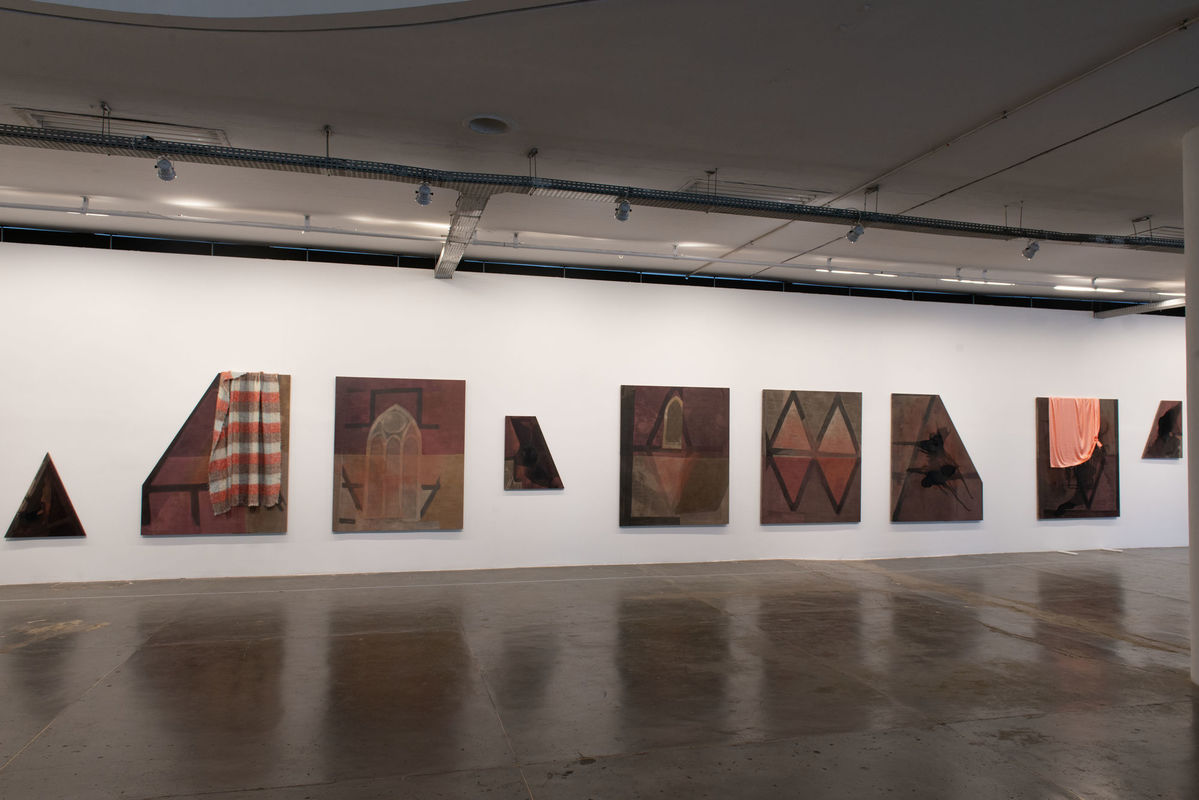
Duane Linklater
Duane Linklater’s works play with concepts of landscape. We know that this term carries the weight of a historical genre of painting, in addition to the complex implications present in one of its facets: the representations of dominated spaces produced by artists commissioned by colonizers. In the ever-present relationship between art and society, in these portrayals we can see, before our eyes, the vast documentation of the processes of domination together with the symbolic and applied change to the uses of territories. I am not referring to every type of landscape, but to those that most genuinely present themselves as a field open to the reach of our vision, the violent representation of what is made possession.
Linklater proposes thinking of landscape as a perceptual experience of the manifestation of natural phenomena, as a physical and spiritual state of beings crossed by the forces of the world. But the reference and the weight of official history are important points to bear in mind, as the artist’s works shatter the often romanticized image, steeped in nostalgia, by questioning its original nature. They even seem to inhabit that fissure. Linklater appropriates elements of modern and contemporary architecture and assimilates them into his work.
For the 35th Bienal, the artist presents a series of paintings that, through the play between form and matter, tension the nefarious legacies of school systems¹1 for Indigenous children – in operation in Canada between 1880 and 1996. In the compositions that Linklater has been pursuing since 2015, when he began this research, he takes up the geometries of the Bishop Fauquier chapel, built using the labor of children who attended the Shingwauk Indian Residential School (which operated from 1873 to 1970). In addition to being required to provide manual labor for the buildings, these children performed Lenten sacrifices related to Maple Syrup. As the project presented by the artist to the 35th Bienal reads, “The Anishinabek communities developed a specific methodology of maple syrup production with their intimate knowledge of the seasons, the land, and its processes. So not only were the children asked to forgo syrup consumption, but it created a symbolic disconnect with these community practices and methodologies.” Divided into nine parts, the geometries of the chapel are treated with other designs made from charcoal, cochineal, tea, tobacco, and other colorings that denote the work of the children who built the construction.
The paintings titled they have piled the stone / as they promised / without syrup continue to resound the artist’s questions: How can we, as Indigenous peoples, live, make decisions, speak, dance, and move in such impossible contexts and places?
emanuel monteiro
translated from Portuguese by philip somervell
Duane Linklater (Omaskêko Ininiwak from Moose Cree First Nation, Treaty Nine Territory, 1976. Lives in North Bay, Canada) is visual artist and curator. His practice explores the physical and theoretical structures of the museum in relation to the current and historical conditions of Indigenous peoples, their objects, and approaches to materials. He presented various solo exhibitions in institutions such as Mercer Union (Toronto, Canada), Frye Art Museum (Seattle, WA, USA), Eli and Edythe Broad Art Museum, and Michigan State University (East Lansing, MI, USA), Utah Museum of Fine Arts (Salt Lake City, UT, USA), and the Institute of Contemporary Art (Philadelphia, PA, USA).
1. The Residential School System in Canada was a violent and prolonged system imposed by the government and its attendant churches, created specifically so that Indigenousindigenous children would be separated from their families, acculturated and colonized.

 Português
Português